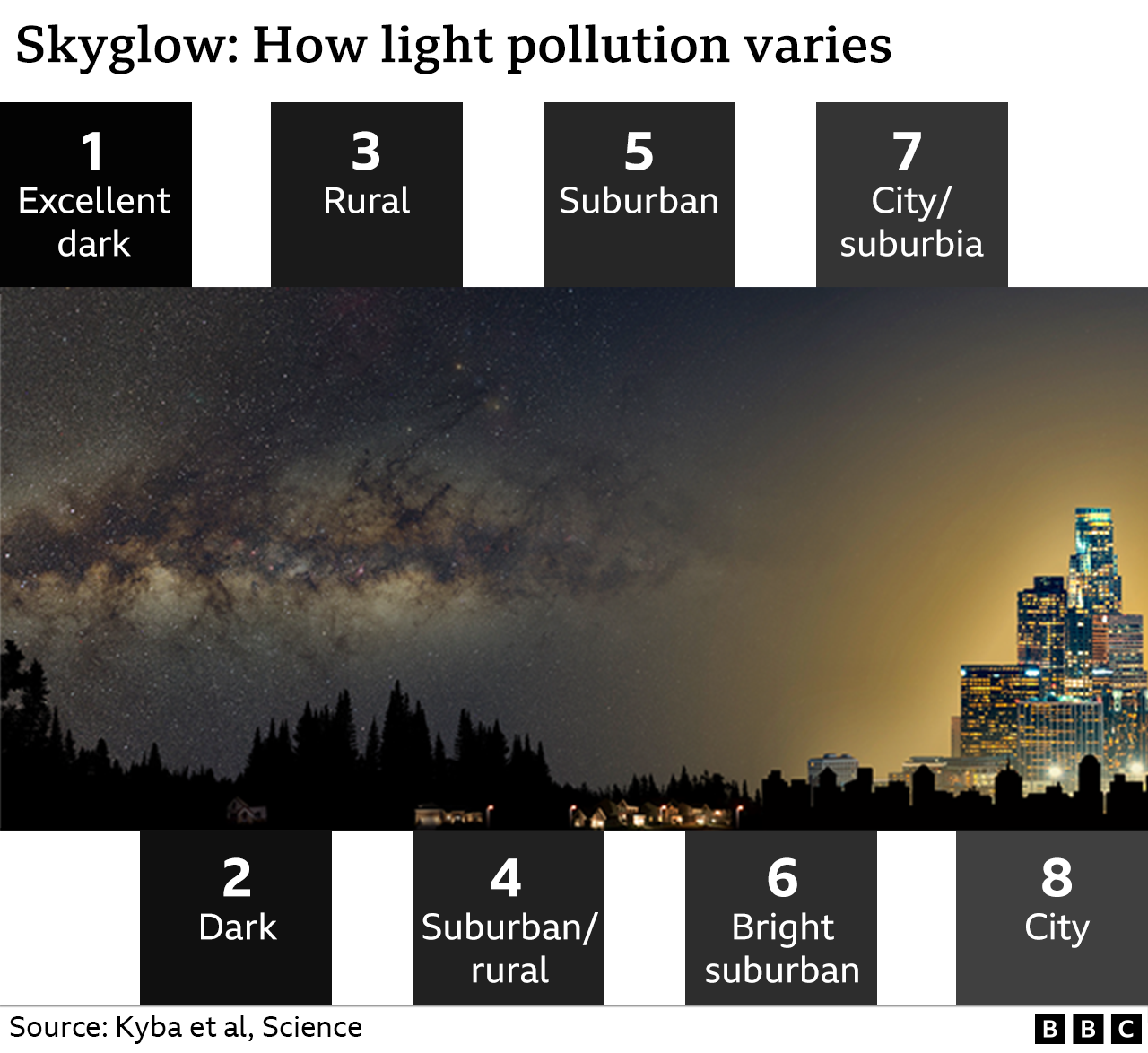ARTICLE AD BOX

By Victoria Gill
Science correspondent, BBC News
The number of stars that people can see with the naked eye has reduced dramatically over the last decade.
The cause is "Skyglow" from artificial lighting - the brightness of that glow has increased every year since 2011.
Dr Christopher Kyba, a scientist from the German Research Centre for Geosciences in Potsdam, told the BBC: "Our view of the stars is disappearing".
He and his colleagues published this discovery in the journal Science.
It is the conclusion of 12 years of amateur astronomers and citizen scientists going out at night to count the stars.
The change in stars' visibility that people reported - by submitting their star counts to an online project called Globe at Night - was equivalent to an almost 10% annual increase in sky brightness every year.
That means, the scientists say, that a child born in an area where 250 stars were visible, would probably see fewer than 100 stars in the same location 18 years later.
Gleaming pollution
As light pollution researchers Fabio Falchi and Salvador Bará pointed out in an expert commentary published alongside the research: "Looking at the International Space Station's images and videos of the Earth at night, people generally are struck by the 'beauty' of city lights, as if they were lights on a Christmas tree.
Image source, NASA
Image caption,Glowing cities at night - captured from the International Space Station - look beautiful, but actually show pollution and wasted energy
"They do not perceive that these are images of pollution. It is like admiring the beauty of the rainbow colours that gasoline produces in water and not recognising that it is chemical pollution."
Dr Kyba said he had hoped to see some signs of improvement in light pollution in recent years, because many urban centres have recently changed their lighting to be more energy-efficient. Towns and cities, particularly in developed countries, are swapping older streetlights for modern LEDS that are more carefully directed downwards, where the light is useful.
"The hope was that if the light was better directed, the situation would get better," he said.
"But there are so many types of lighting - streetlights, decorative, advertising. So, with all these things combined - and possibly more lighting overall - [we're] making sky brightness worse."
According to a 2022 study by the European Space Agency the relatively low cost of LED lighting is also contributing to the problem.
Image source, PATRICK LANDMANN/SCIENCE PHOTO LIBRARY
Image caption,Light pollution can affect our sleep patterns
The agency described this as a "lighting paradox", explaining: "While the LED lighting revolution promised to reduce energy consumption and improve human vision at night, overall [light pollution has] increased. Paradoxically, the cheaper and better the lighting, the higher society's addiction to light."
Light pollution doesn't just reduce our view of the stars. It has been shown to affect human health and disrupt sleep patterns. It also affects the behaviour of some nocturnal animals, with one recent study linking it with local insect decline.
"It does not need to be this way," insists Dr Kyba. "There's a lot of room for improvement - if you light more carefully, you should be able to reduce skyglow, whilst still lighting the ground.
Image source, Science Photo Library
Image caption,Previous research showed the brightest parts of the UK getting brighter over time
"And remember that light pollution is wasted energy. We're continuing to put that light energy into the atmosphere, and maybe that's not what we should be doing."
Additional reporting by Kate Stephens
Follow Victoria on Twitter

 2 years ago
53
2 years ago
53








 English (US) ·
English (US) ·